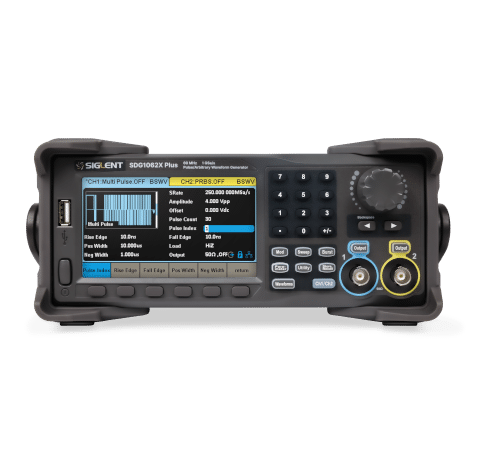The waveform generator offers features like high sampling rates, flexible connectivity, and precise signal generation for various testing applications.

Siglent Technologies has launched the SDG1000X Plus Arbitrary Waveform Generator series. This series offers features and specifications at a competitive price. Key highlights include a 20MHz square wave and pulse with low jitter, 1GSa/s sampling rate, 8Mpts arbitrary waveform length per channel, and various modulation modes.
It provides multiple connectivity options, including a USB Host & Device, LAN with SCPI commands for remote control, and a built-in web server for browser-based control. The series suits engineers in embedded systems, IoT, power supply, industrial control and automation, ATE bench integration, academics, and research.
The series features a 16-bit vertical resolution and 1 GSa/s sampling rate, offering accurate signal details and high fidelity. It is ideal for applications like developing and testing communication equipment.
The series provides 8 Mpts of waveform memory, enabling the generation of long, complex modulated signals. It simulates modulated signals and pulse sequences for modern communication systems. The device is also suited for high-speed chip testing in the semiconductor industry, where precise timing and amplitude control are necessary. Researchers in the biomedical field can use it to simulate bioelectric signals, aiding the study of electrical signal transmission and supporting the development of medical devices.
The series supports PRBS pattern output from PRBS3 to PRBS32, generating high-speed pseudo-random binary sequences (PRBS) with bit rates from 1 μbps to 40 Mbps. It is useful for testing high-speed serial communication systems like Ethernet, USB, and HDMI protocols. The SDG1000X Plus simulates real-world communication environments, helping engineers identify potential issues. Built-in support for TTL, LVCMOS, and other logic levels generates differential signals for applications that require high common-mode rejection ratios.
The series features multi-pulse output with rise/fall times as fast as 10 ns. Each pulse can be individually configured, enabling engineers to generate precise gate drive signals and measure power devices’ switching parameters and dynamic characteristics. This improves the testing efficiency and accuracy of devices like IGBTs and MOSFETs.
The built-in Webserver function allows engineers to remotely control and configure the instrument over a network, streamlining testing workflows, especially in environments with frequent parameter adjustments.






